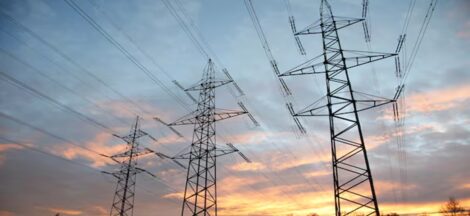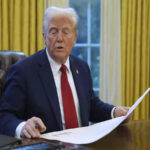NEW DELHI: US President Donald Trump on Thursday unveiled his promise of reciprocal tariffs on trading partners, stressing this was a kinder reciprocity as it amounted to only half of the levies US goods faced. This included a 27 per cent additional tariff imposed on imports from India as part of his country-specific tariff structure that will kick in from April 9.
The move that includes a baseline 10 per cent tariff on all countries, which takes effect on April 5, is feared to trigger an escalating trade war with likely tectonic shifts in the global economic landscape.
While crucial exporting sectors for India, such as pharmaceuticals and energy, were kept out of the ambit of reciprocal tariffs, the relatively low duty imposed on India compared to its competitors such as China (34 per cent), Vietnam (46 per cent), and Bangladesh (37 per cent) may give New Delhi a competitive advantage.
Trump’s tariffs, however, are also feared to spark global supply glut and a US economic contraction through a domestic consumption shock that could have adverse impact on India. “They (India) are charging us 52 per cent and we charge almost nothing for years and years and decades,” Trump said at the “Liberation Day” event at the White House Rose Garden. He also indicated that the US was open to lowering these tariffs if other nations removed their trade barriers on US exports, and implored foreign leaders to “terminate your own tariffs, drop your barriers” and “don’t manipulate your currencies.”
While many economies including the European Union, China, and Canada, vowed to take “countermeasures” against the reciprocal tariffs, Indian officials exuded optimism in their initial comments, holding that the country valued its Comprehensive Global Strategic Partnership with the United States. “For Trump, it’s America first but for Modi, it’s India first. We are assessing the impact of reciprocal tariffs imposed by the US,” Minister of State for Finance Pankaj Chaudhary told reporters. A senior government official said India would take a measured approach, signalling that retaliation against additional tariff was not on the cards.
“The focus is on expeditious completion of the bilateral trade agreement talks by the fall of 2025. Towards this, an inter-ministerial panel (comprising officials from key line ministries) has been set up to closely monitor and discuss matters related to trade agreement,” the official said, adding that the government will also consider offering support to exporters who are adversely hit by the reciprocal tariffs.
The Department of Commerce, in a statement said, it is “carefully examining” the implications of the various measures/announcements made by Trump. “Keeping in view the vision of Viksit Bharat, the department is engaged with all stakeholders, including Indian industry and exporters, taking feedback of their assessment of the tariffs and assessing the situation. It is also studying the opportunities that may arise due to this new development in the US trade policy,” it said.
India is also hopeful that a positive outcome from the ongoing negotiations from the Bilateral Trade Agreement (BTA) could significantly ameliorate any adverse impact of the reciprocal tariffs.
Discussions are ongoing between Indian and US trade teams for the expeditious conclusion of a mutually beneficial, multi-sectoral BTA. These cover a wide range of issues of mutual interest including deepening supply chain integration. The ongoing talks are focused on enabling both nations to grow trade, investments and technology transfers. We remain in touch with the Trump administration on these issues and expect to take them forward in the coming days,” the commerce department said.
Officials believe sectors like electronics may benefit from the US-imposed reciprocal tariffs. Since competitor nations face higher tariffs, Indian electronics exporters may have an advantage. On the other hand, sectors like marine products may be negatively impacted.
Citing examples of India’s high tariffs, the White House in a factsheet highlighted the country’s 70 per cent tariff on passenger vehicle imports, 10-20 per cent levy on networking switches and routers, 80 per cent on rice in the husk, and 50 per cent on apples imported from the US.
India imposes their own uniquely burdensome and/or duplicative testing and certification requirements in sectors such as chemicals, telecom products, and medical devices that make it difficult or costly for American companies to sell their products in India. If these barriers were removed, it is estimated that US exports would increase by at least $5.3 billion annually,” the factsheet said.
Though the US said India’s average most-favoured nation (MFN) tariff rate is 17 per cent, the 27 per cent reciprocal tariff factored in the trade imbalance between both the countries.
India is expected to benefit from further US-China decoupling with the cumulative tariff hike on China at 54 per cent, including the 20 per cent duty hike announced earlier.
Brijesh Kothary, partner at Khaitan & Co said: “This positions the country advantageously as businesses increasingly look to diversify their supply chains away from regions with higher tariff rates. This long-term structural shift is expected to strengthen India’s economic position in the global trade landscape. Indian exporters can look to seize this opportunity by gaining access to the US market and strengthening their role as global suppliers.”
Tariffs unveiled by Trump would bring a major realignment in global trade and manufacturing value chains, Assocham president Sanjay Nayar said.
Net-net, it appears India’s export competitiveness to the US market stands far less impacted on a relative basis. Yet, our industry should make concerted efforts to increase export efficiency and value addition, to mitigate impact of these tariffs,” he said.
Anubhuti Sahay, head — India, Economics Research at Standard Chartered Bank said the tariff measures are likely to adversely impact India’s GDP by 35-40 basis points (bps), everything else remaining constant.
However, the final impact would depend on the trade deal agreement between India and the USA along with how each country negotiates/ retaliates on the proposed tariffs. We estimate maximum impact on the agriculture sector given large tariff gaps and relatively higher value added for these products versus say other products,” she added.
Tanvee Gupta Jain, Chief India Economist at UBS Securities said the magnitude of the tariff hikes suggests further downside risk to India’s growth forecasts to the tune of 30-50 bps.
However, as a bilateral trade agreement between the US and India materialises, we believe the net impact could be reduced. We think the prolonged global uncertainty could have greater implications for financial markets than the macro economy,” she added.
Source: Business Standard




 Mass Layoffs, Price Hikes, Job Insecurity Mark Trump’s Tariff War On April 2
Mass Layoffs, Price Hikes, Job Insecurity Mark Trump’s Tariff War On April 2 